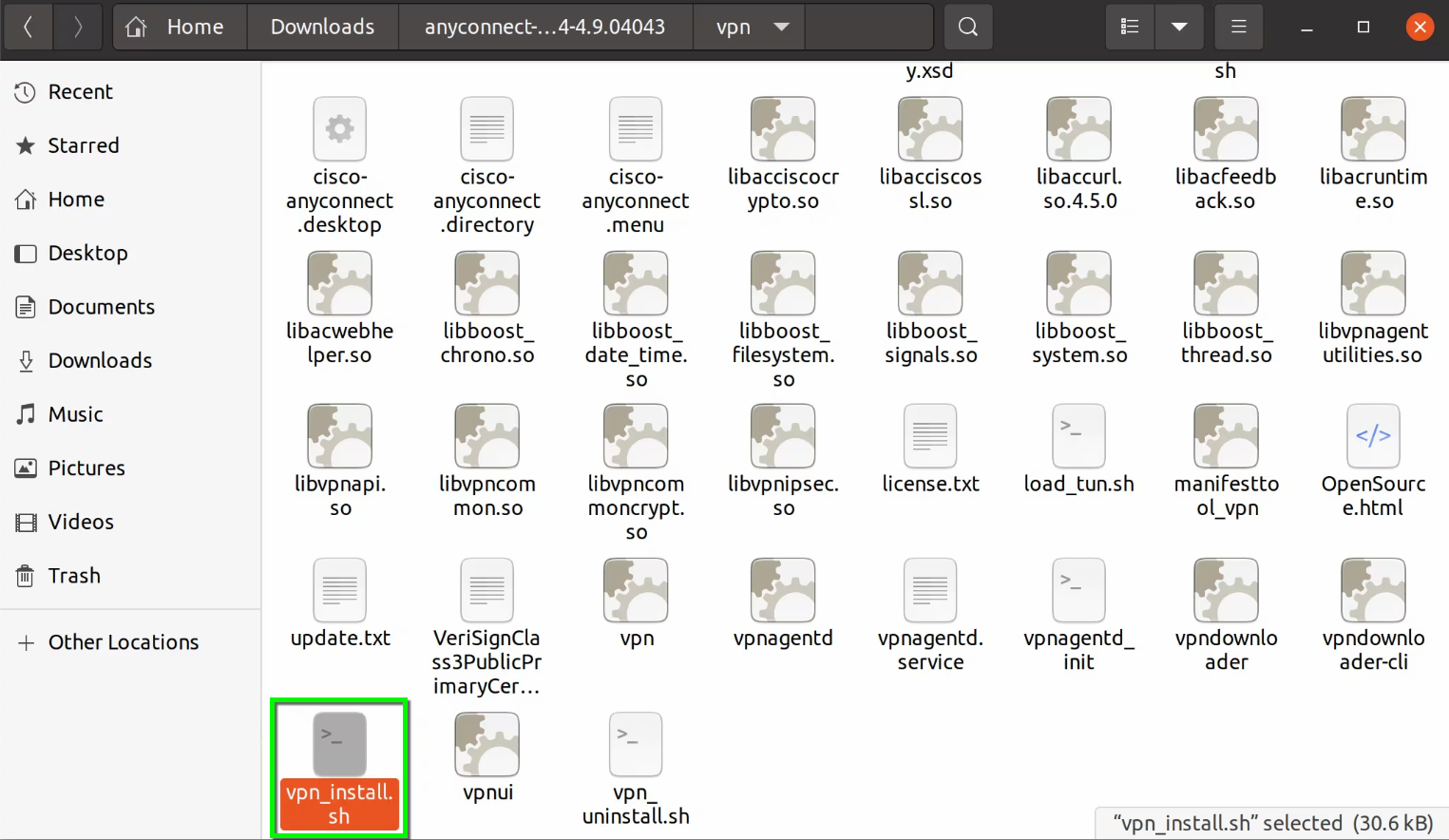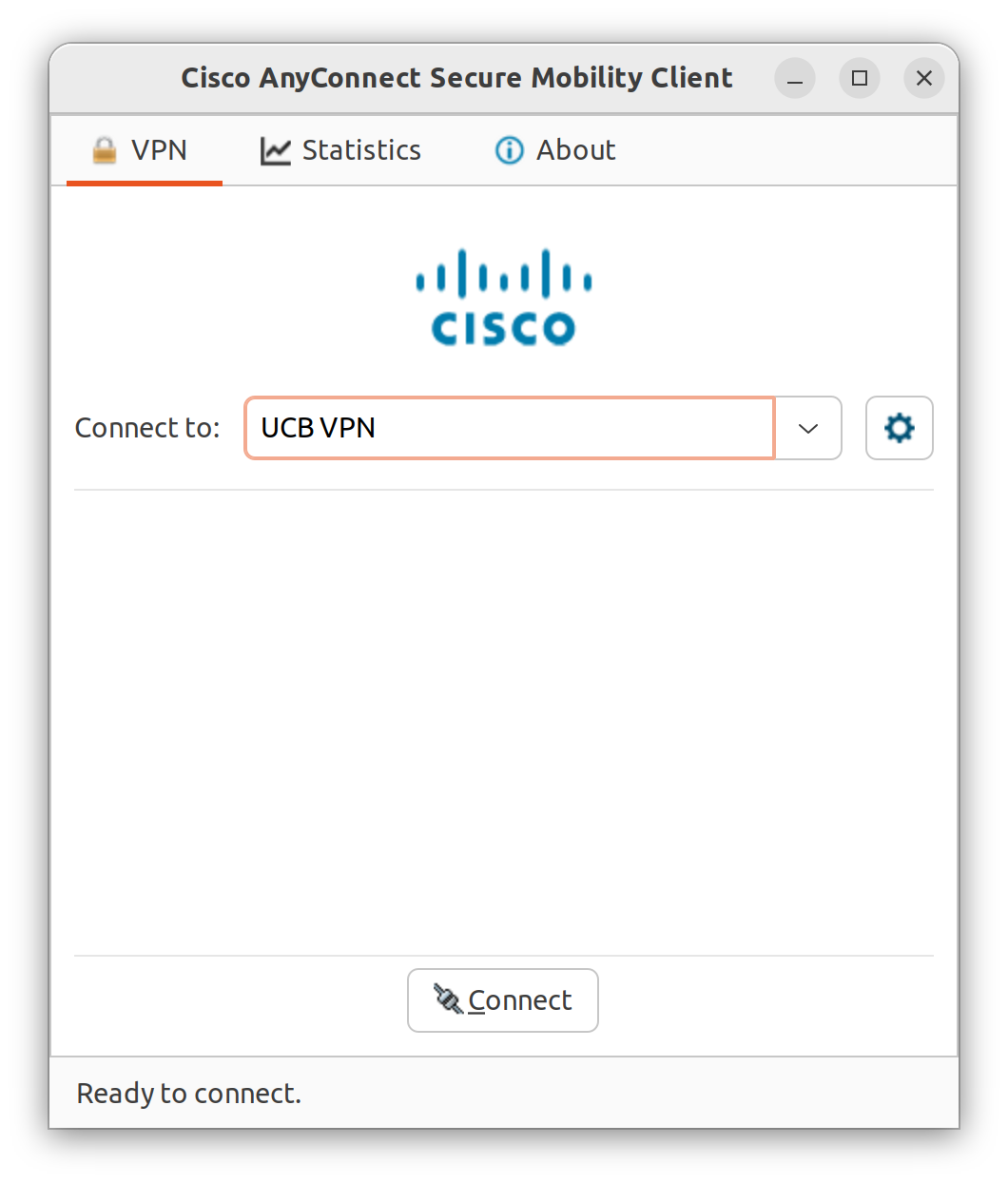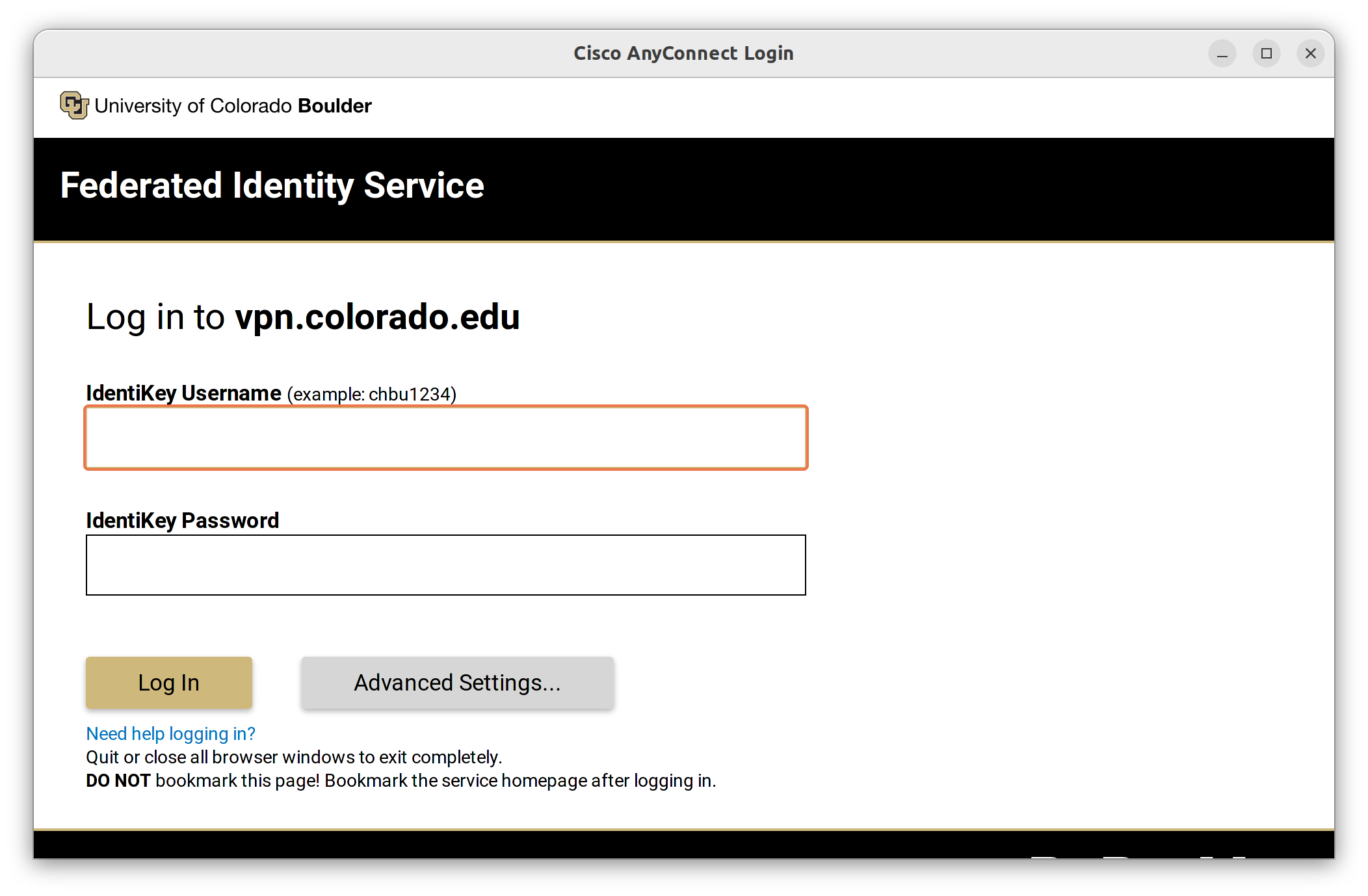Get the Software
To start, download the needed Linux VPN client: Cisco Secure Client for Linux.
Instructions for the Desktop User Interface
Installation
- Find the folder where you have downloaded the Cisco Secure Client Package.
The initial download is a tarball archive (*.TAR, several files packed into one), which must be extracted. To extract the files, right-click on the Secure Client archive and choose Open with Archive Manager. Click Extract.

- When you get a notification that the extraction is completed, click Close.
Locate the vpn_install.sh file in the extracted folder.

- To run the Secure Client install script, press Ctrl+Alt+T to open a Linux Terminal.
- Type sudo ./vpn_install.sh
- Accept the terms in the license agreement to complete the installation by typing "y".
Using Cisco Secure Client
- In the Desktop environment, search for or find the Cisco Secure Client application and open it.
In the Connect to: field, enter vpn.colorado.edu or your custom VPN address. After your initial connection, you'll have the option to select a previous VPN connection.

Log in to the Federated Identity Service with your IdentiKey username and password.

- Authenticate with Duo multi-factor authentication to finish logging in to VPN. Learn more about Duo MFA.
- When the connection is established, the login banner will appear. Click Accept if prompted.